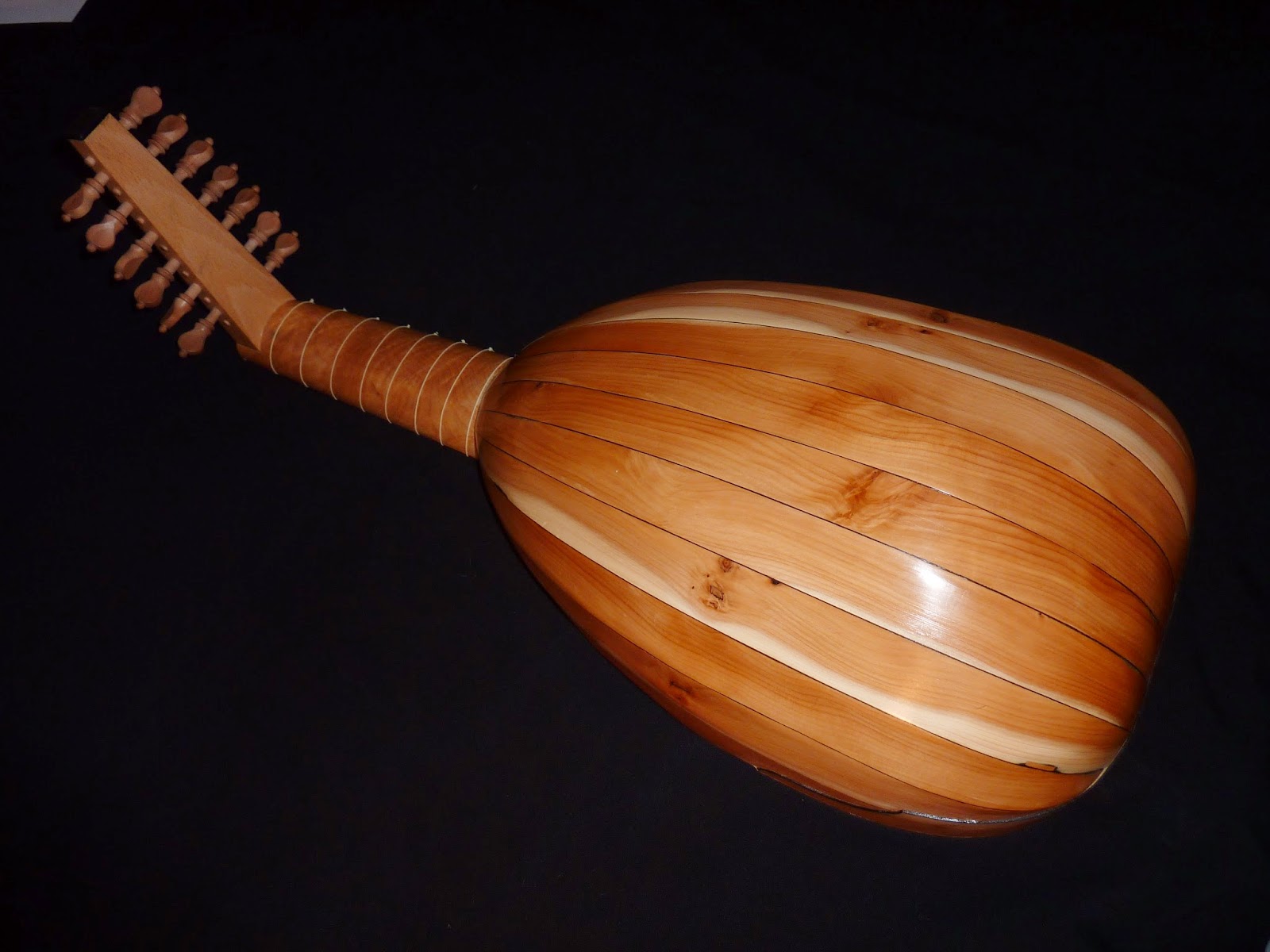
It's been a few months since I last posted anything. I've been busy with other things, and the instrument making has taken a back seat. I had a minor 'incident' with the lute - my workshop (garage) had become so untidy that I knocked the lute off its hanging hook and it fell onto the concrete floor. The neck joint and one of the ribs needed repairing, but I'm glad it wasn't worse - my resolution this year is to get a bit more order into the workshop.
Anyway, I have been making slow but steady progress since then. I finished making the pegs, and I have fitted the pegbox. I have also completed the 'half-binding'. This is a little different to guitar bindings as is doesn't go all the way through the thickness of the belly. This allows the belly to be removed by some future lute repair man without making too much of a mess! My binding material was narrow strips of ebony, and it looks quite neat (but more like 7/8 of the belly thickness). It's all been done with hide glue which I am getting to enjoy using - having an old iron on hand (on a cool setting) helps to make a neat joint.
With the woodwork now completed, I am starting the finishing process. The bowl will be French polished, and the neck and pegbox will be finished with walnut oil (I've bought a finish made for gun stocks). The belly will be waxed, and this evening I prepared the wax - a mixture of beeswax, carnauba wax and turpentine, which was fun to make. The whole thing will be given a protective wax coat to finish it off. I think that this sounds like a lot of different finishes, but it is what Robert Lundberg suggests in his book, and he should know!
 I finally finished off the lute today. I decided that the previous bridge issues were down to a bad glue joint, so I took extra care this time!
I finally finished off the lute today. I decided that the previous bridge issues were down to a bad glue joint, so I took extra care this time!








